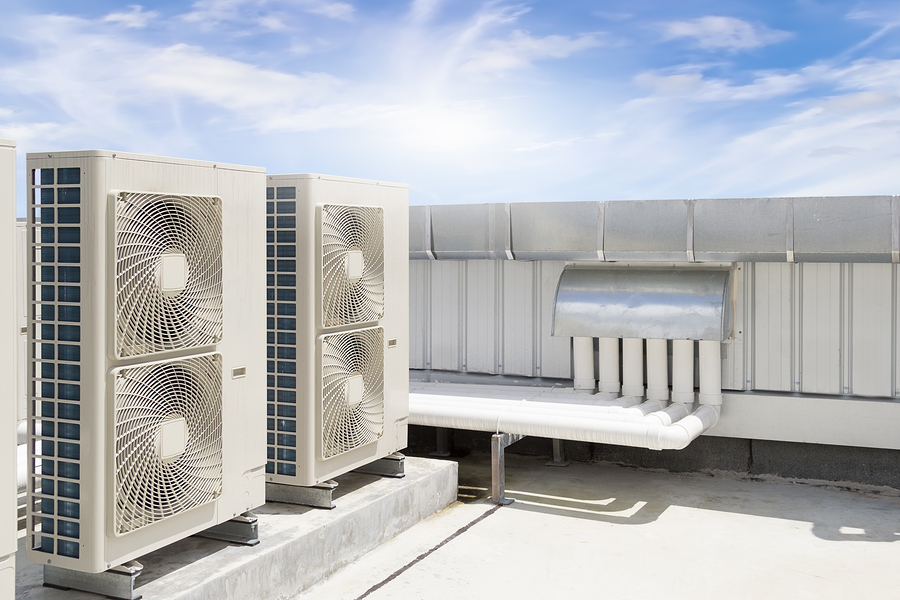Quite simply: a heat pump pumps heat from the environment into the house, raises it to a higher temperature level and makes it usable for heating. In principle, the heat pump works like a refrigerator - just the other way round.
While the refrigerator extracts heat from the food and the air inside it and releases it (unused) to the environment, the heat pump extracts heat from the environment and directs it into the pool or house. It does not even need high temperatures: temperatures can be below freezing and a heat pump will still work. As a fact. Air at -15 Degrees Celcius still holds 85% of the energy it holds at +25 Degrees C.
From the refrigerant to the heating heat - this is how a heat pump works
The principle of the heat pump works like a reverse refrigerator and is always the same regardless of the different variants:
- The evaporator is a liquid refrigerant, which evaporates already at relatively low temperatures. For example, enough heat from the ground, which is absorbed by the refrigerant.
- The gaseous refrigerant is compressed in the compressor. This increases the pressure and thus the temperature of the refrigerant.
- The heated refrigerant then enters the condenser (condenser) where it transfers its heat to the heating system for the building and becomes liquid again.
- The still pressurised refrigerant passes through the so-called expansion or expansion valve back to the original low pressure level and then on to the evaporator, where the process begins again.
The result: The pool is nice and warm and ready for swimming or the house is nice and cozy ready to put your feet up even though the "heat" comes from a potentially snow-covered floor behind the house.
Performance figure and annual work rate: Key figures for the quality of heat pumps
For the quality of the heat pump is crucial how the ratio between the supplied and the recovered energy. There are two key figures for this:
- The coefficient of performance (COP) represents the relationship between effort and benefit. The decisive factor is the temperature difference between the heat source and the temperature to be provided for the heating system (flow temperature).
- The annual work figure indicates the ratio between the generated heating energy (kWh) and the electrical energy used (kWh) during a heating period. It therefore indicates how many units of heat are recovered from a unit of electricity on an annual average. The annual work rate is therefore the best parameter to assess the quality of a heat pump.
Where are heat pumps used meaningfully?
In the annual work figure, values between 4 and 6 are considered good. These values are most likely to be reached when, for example
- The heating requirment is minimised by insulating the building.
- Reducing the set point temperatures
- The heating system requires a low flow temperature (40 ° C max.). This is the case eg for surface heating (floor or wall heating).
- A heat source is selected that has a very uniform and high temperature throughout the year (eg soil, groundwater).
Heat sources for heat pumps
Possible sources of heat are soil, groundwater and ambient air:
The soil has a uniform temperature throughout the year. Therefore, at a depth of about 1.5 meters, surface collectors are designed, through whose pipes a mixture of water and antifreeze flows, this is also-called brine. The necessary area depends on the heat demand of the building. This variant is possible with enough available open spaces. Geothermal probes, however, are typically placed from 30 to 100 meters deep vertically into the ground. This requires less space, but is subject to approval.
Groundwater is also good because of its constant temperature as a source of heat. However, the groundwater supply on the property must be sufficient. This can be determined by a test hole. The quality of the water must be checked by means of a water analysis. The use of groundwater is subject to approval by the Local Water Authority
The air as a heat source is easy to tap into and available everywhere in sufficient quantity. The disadvantage is that air is the coldest when the heat demand is highest (heating season) for space heating but excellent for pool heating in the summer months.
To find out more about our pool heat pumps and our heating and cooling heat pumps feel free to speak to one of our experts.
